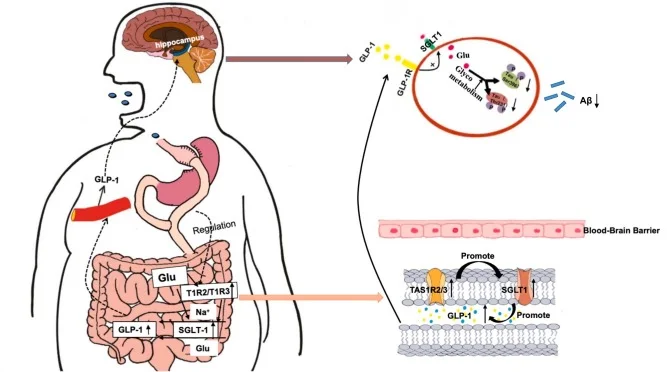
(WNFLB)Widespread Neurological Function Loss Bypassing indeed sounds like a mouthful. The understanding of this condition is really critical to anybody who either suffers from it or even wants to know the implications. Imagine the delicate network in your brain in signals and functions suddenly getting disrupted, which left one fumbling with the basic tasks of life. This blog post goes deep into WNFLB, exploring its causes, symptoms, treatment options, and recovery processes.
Whether one is a patient, a caregiver, or even if one seeks knowledge on neurological health issues, atietetendeavorto shed light on this complex topic, meanwhile offering hope for those negotiating these challenges. Join us as we unpack the details of WNFLB and show support to all who are affected by this condition.
Understanding Widespread Neurological Function Loss Bypass (WNFLB)
Widespread Neurological Function Loss Bypass (WNFLB) refers to a significant disruption in the brain’s ability to perform its essential tasks. This condition can affect cognitive functions, motor skills, and sensory processing.
The term “bypass” suggests an alternative pathway that the brain attempts when normal connectivity is compromised. When signals within neurons fail to communicate effectively, patients may experience a range of symptoms that impact daily life.
This neurological issue often results from various underlying conditions such as trauma, stroke, or neurodegenerative diseases. Understanding WNFLB requires not just medical knowledge but also empathy towards those experiencing its effects.
Researchers continue exploring the mechanisms behind WNFLB. They aim to develop more targeted treatments and rehabilitation strategies that could improve outcomes for affected individuals. Each case presents unique challenges and possibilities for recovery.
Causes of WNFLB
Widespread Neurological Function Loss Bypass, or WNFLB, can stem from various factors. One prominent cause is neurodegenerative diseases like Alzheimer’s and Parkinson’s. These conditions gradually attack nerve cells, impairing brain function.
Traumatic brain injuries also play a significant role in the onset of WNFLB. Accidents or falls that lead to concussions can disrupt normal neurological activities.
Infections such as meningitis and encephalitis may trigger widespread neurological damage as well. When inflammation occurs in the brain due to these infections, it can result in lasting effects on cognitive abilities.
Autoimmune disorders contribute too; they misdirect immune responses against healthy neural tissues. This misguided attack compromises essential functions within the nervous system.
Exposure to toxins—such as heavy metals—can provoke severe neurological impairment over time. Understanding these causes is crucial for effective intervention and management strategies.
Symptoms and Diagnosis of WNFLB
Symptoms of WNFLB are quite variable from person to person. Some common symptoms include cognitive deficits: a loss of memory or an inability to concentrate. Mood changes and emotional lability also occur among affected individuals.
On physical examination, symptoms may manifest as muscle weakness or coordination issues. These problems can further result in an unstable gait or instability in balance, further complicating the ease of daily activities. Changes in sensations of extremities can show up as symptoms, including tingling or numbness.
This diagnosis usually begins with the taking of a correct history of the patient and clinical physical examination. This would then follow advanced imaging tests, such as MRI, that would help visualize activities of the brain and further any potential damage to the brain. Other tests also include neuropsychological tests designed in assessing cognitive function.
Healthcare providers need to ensure that other conditions have been excluded, which can also present similar symptoms to WNFLB. Early diagnosis, in fact, offers timely management and a plan of treatment with appropriate interventions suited to the needs of the patient.
Treatment Options for WNFLB
WNFLB treatment options depend on severity and possible causes, and are thus varied. Symptomatic management plays the major role of drugs. Antidepressants, anticonvulsants, or anti-anxiety drugs may be given to reduce discomfort.
Another important mode of treatment is physical therapy. Customized exercises can improve strength and mobility, thereby making daily activities easier.
Occupational therapy aims at developing life skills. As such, therapists will make adaptations in the environment of their patients so that activities of daily living become easier to handle against the neurological difficulties.
CBT applies in some cases, offering emotional support and giving ways of coping. This kind of psychological intervention is important in handling the mental health component resulting from WNFLB.
Moreover, research is carried out on the development of other rising treatments; neuromodulation techniques include TMS. These present some promise in functional restoration through the action of specific portions of the brain affected by the condition.
Recovery and Rehabilitation for WNFLB Patients
Recovery and rehabilitation for WNFLB patients is a crucial part of the healing journey. Each patient’s path is unique, reflecting their specific needs and capabilities.
Therapies often focus on regaining lost neurological functions. Physical therapy can help improve motor skills, while occupational therapy aids in daily living activities. These tailored approaches empower patients to rediscover independence.
Speech-language pathology may also be vital for those facing communication challenges. Engaging with skilled professionals creates personalized goals that are both attainable and motivating.
Support groups play an essential role too. Sharing experiences fosters a sense of community among individuals facing similar hurdles.
Family involvement enhances recovery as well. Loved ones can provide emotional support, ensuring patients feel understood throughout this challenging time.
Patience is key during rehabilitation; progress might be slow but every small achievement counts towards reclaiming normalcy in life.
Coping with the Effects of WNFLB on Daily Life
Living with WNFLB can reshape daily routines in unexpected ways. Simple tasks might become daunting challenges. Adapting to these changes requires patience and creativity.
Establishing a structured routine can bring comfort. Breaking activities into smaller steps helps manage overwhelming feelings. Small achievements, like completing a task or engaging in social interactions, can boost confidence.
Support from friends and family plays a crucial role too. Open communication about needs fosters understanding and connection. Finding local support groups allows sharing experiences with others facing similar struggles.
Mindfulness practices such as meditation or gentle yoga may ease anxiety linked to WNFLB. These techniques promote relaxation and help maintain focus on the present moment.
Finding enjoyable hobbies can serve as an emotional outlet, providing joy during tough times. Whether it’s painting, reading, or gardening, nurturing personal interests is vital for overall well-being amidst challenges posed by WNFLB.
Seeking Support for Patients and Caregivers
WNFLB can be overwhelming to live with. Many patients and caregivers require a support system that understands the struggles.
Support groups offer a place to share experiences. Sharing with others who face similar hurdles may prove cathartic, gaining valuable practical advice in the process.
Another important resource appreciated is professional counseling. Professional counseling can help patients and caregivers cope with potential feelings of anxiety or depression stemming from the condition.
Online forums also serve as a major avenue. They allow anonymity, allowing free discussions of concerns sans threats of judgment.
Not to forget the family members’ role, either; they should be able to give daily help and understanding. Open communication within the family will make a comfortable and caring atmosphere for everyone when facing difficulties.
Future Developments in the Treatment of WNFLB
Researchers are exploring innovative approaches to treat WNFLB. One promising avenue is the use of neurostimulation techniques. These methods aim to enhance neural pathways and restore function where damage has occurred.
Another area of interest involves regenerative medicine. Stem cell therapies may provide new hope by repairing damaged nerve cells and facilitating recovery. Scientists are actively studying how these treatments can be applied effectively in clinical settings.
Advancements in personalized medicine also hold potential for WNFLB patients. Tailoring treatment plans based on individual genetic profiles could lead to more effective interventions, minimizing side effects and maximizing benefits.
Furthermore, technology plays a critical role in future developments. Virtual reality rehabilitation programs show promise for engaging patients while improving cognitive functions through interactive experiences that adapt to their needs.
As research continues, collaboration among scientists, clinicians, and tech developers will likely accelerate progress toward more effective solutions for those affected by widespread neurological function loss.
Conclusion
WNFLB, or Widespread Neurological Function Loss Bypass, is quite a complicated condition. Pursuing attention and understanding through the causes, symptoms, and treatment options available for such patients with WNFLB will help in creating more awareness about this crippling disorder. Knowledge regarding various recovery strategies and coping mechanisms acts to enhance not only the care given to the patient but also the supporting systems for the caregivers themselves.
Knowledge is evolving, and with this, newer treatments can bring hopes for better outcomes. The journey of WNFLB is not easy, but an informed and connected perspective has lightened the path toward better management of day-to-day life challenges put forward by the condition. With ongoing developments in medical science, there remains a promise of hope amid established community support networks for WNFLB.






